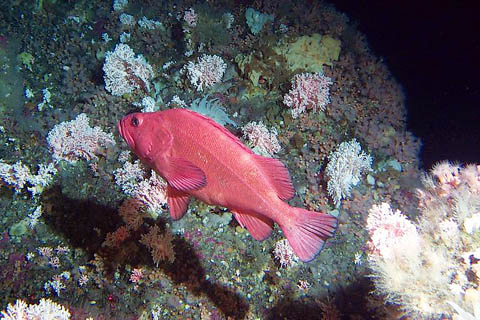Canadian Council of Fisheries and Aquaculture Ministers (CCFAM) Report on Canada’s Network of Marine Protected Areas, June 2017
Table of Contents
- Complete Text
- Executive Summary
- Introduction
- The Importance of Healthy Oceans
- Benefits of Marine Protected Areas and Marine Protected Area Networks
- Marine Protected Area Network Planning
- Progress in Priority Marine Bioregions
- Marine Conservation Targets: 2017 and 2020
- Other Effective Area-Based Conservation Measures (OEABCM)
- Conclusion
Executive Summary
In 2011, the National Framework for Canada’s Network of Marine Protected Areas was developed for the Canadian Council of Fisheries and Aquaculture Ministers (CCFAM) to outline a strategic direction for the establishment of a national network of marine protected areas (MPAs). The vision articulated in the National Framework is for “an ecologically comprehensive, resilient, and representative national network of marine protected areas that protects the biological diversity and health of the marine environment for present and future generations.” To achieve this vision, the Government of Canada has committed to increasing marine and coastal protected areas to 5 percent in 2017 and to 10 percent in 2020.
In January 2016, CCFAM re-established the Oceans Task Group (OTG)Footnote 1 to provide guidance on the National Framework.
The purpose of this report is to provide an update on MPA network planning, focusing on progress in five priority bioregions.Footnote 2 The report also highlights the contribution of Fisheries and Oceans Canada (DFO) to other effective area-based conservation measures (OEABCM), to MPA networks, and to meeting the Government of Canada’s commitment to national and international marine conservation targets (MCTs).
In terms of advancing the national network of MPAs, this report highlights progress made on work in five priority bioregions: Pacific Northern Shelf, Western Arctic, Newfoundland and Labrador Shelves, Scotian Shelf, and the Estuary and Gulf of St. Lawrence. Network planning and bioregional governance processes support the establishment of individual MPAs which make progress toward meeting the Government of Canada’s commitment. This planning also provides the long-term platform for identifying future marine areas of protection and will support improved collaborative management of Canada’s oceans.
The OTG recognizes that protecting Canada’s marine and coastal areas requires collective efforts and supports federal-provincial-territorial efforts to work together, in accordance with each government’s jurisdiction and priorities. The role of Indigenous groups as well as coastal communities, marine industry sectors, conservation groups, and the public is also important for advancing the conservation and sustainable use of Canada’s marine resources.
- Date modified:
